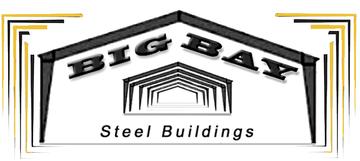Insulation
It is a well-known fact insulation will regulate and hold the temperature constant in a steel building for a certain amount of time. Insulation will keep the inside cool during the hot months, and it will keep the steel building warm inside during the cold months. However, insulation in a steel building is essential to have because it prevents condensation. The insulation also offers bright finishes, air tightness, and excellent acoustic properties. When picking your insulation package, make sure you check with your local building codes and building department to find out if you have any insulation requirements or energy codes that you must follow.
Single Layer System
With a single layer insulation system, you can achieve R- values up to R-19. With the single layer system, the insulation lies between the purlin or girt and the wall or roof panel. The fiberglass rolls are essentially sandwiched in there to fill this cavity created by the panel and the girt or purlin. The single layer system does have a vinyl backing, and this vinyl backing is placed on the interior of the building to give it a nice, clean, finished look inside.
Double Layer System
A double layer system will allow you to reach those higher R-values. A double layer system is just that, two layers installed together and basically on top of each other. The fiberglass insulation is installed between the girts and the purlins, once again filling this open cavity, and an additional layer of unfaced insulation is installed over top of the purlins or girts. This second layer does not fill the cavity, but it is what gives the high R-value rating and added coverage. These systems also come with a nice vinyl white finish that leaves a clean smooth look inside the building.
Energy Saver System
With this system, the first layer of unfaced insulation is installed between the purlins or girts, filling the cavity. A second unfaced layer then goes over top. The heavy-duty fabric is cut to fit and cover the bay, leaving the purlins or girts covered and protected. The roof or wall panels are then installed over the insulation. The double energy saver layers will reach the high R-values and can fulfill many code requirements.
Thermal Block
Thermal blocks are placed directly on the purlin or girt. The thermal blocks are usually 1’’ thick, and they provide additional R-value to the insulation system. Thermal blocks are used with a single layer or double layer fiberglass insulation system. What they are known for is providing a thermal break between the interior steel and the exterior panels. Thermal blocks are easy to install and can give you that added R-value you might need to meet an energy code requirement.




